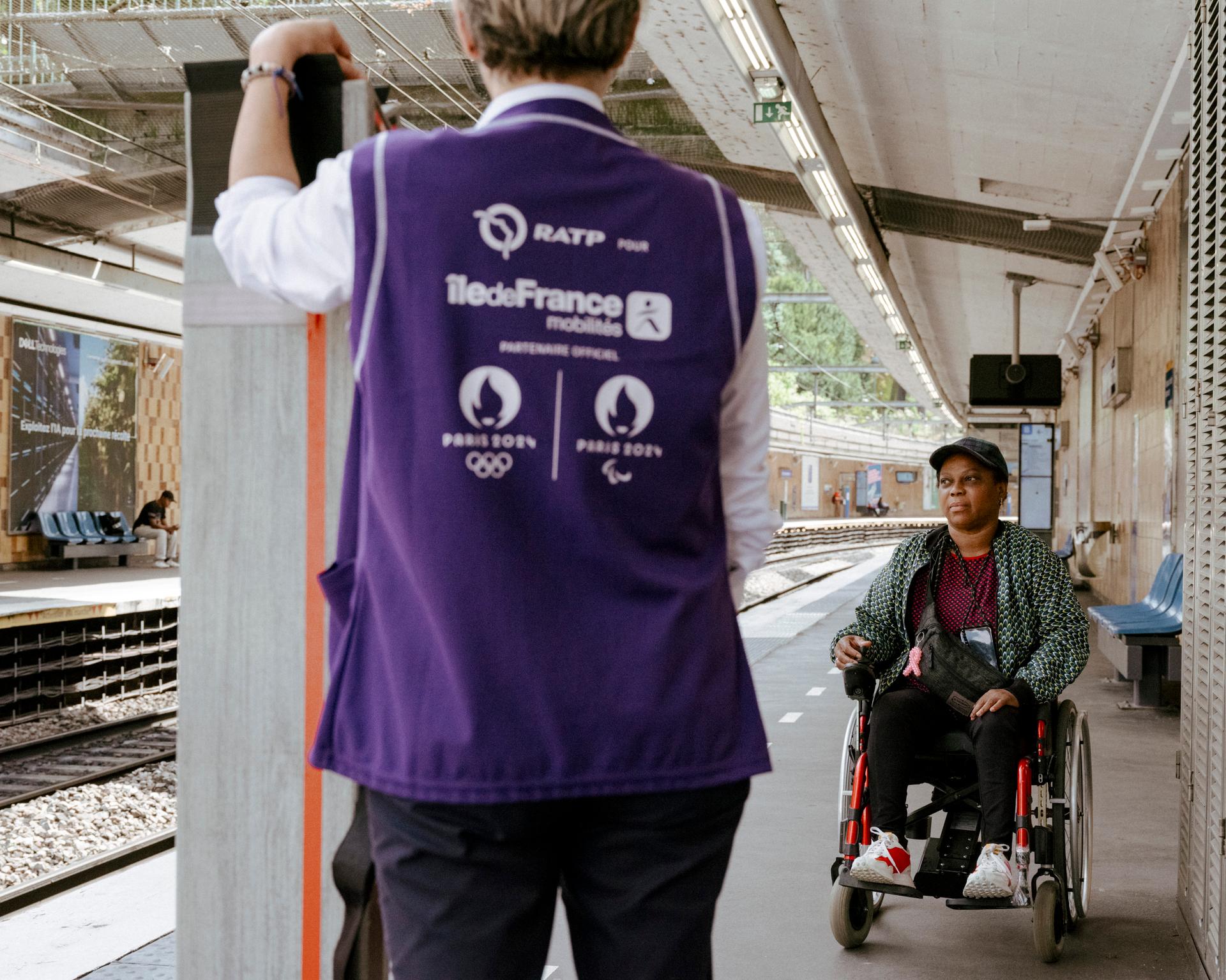“Did you see how exhausting that was?” For 56-year-old Ndieme Lame, getting on the bus alone on Wednesday, August 21, in Paris proved unattainable: The slope was too steep. Two further pairs of arms have been wanted to take her electrical wheelchair on either side and push it. At a time when official speeches are repeating that the Olympic and Paralympic Video games characterize an acceleration when it comes to incapacity consciousness, this scene, a fraction of the each day lifetime of an individual with decreased mobility within the French capital, bears witness to the truth that there’s nonetheless an extended option to go. For instance, wheelchair customers can take twice and even 3 times as lengthy to get round as able-bodied folks.
Regardless of investments made in recent times by the RATP Paris transport operator and France’s nationwide prepare firm, SNCF, in addition to the Metropolis of Paris, accessibility on public transport stays “inadequate,” mentioned Lame. Born in Dakar to a Senegalese mom and French father, she was identified with polio at 11 months. A Parisian since 2001, the previous grocery store cashier, who’s about to retrain as a craftsworker, has been wheelchair-bound since 2013.
In the course of the Olympic and Paralympic Video games, Lame, who has been a member of the APF France Handicap affiliation for some 20 years, was one in all 300 folks chosen by the group to function a volunteer. In the course of the Olympic interval, she labored on the Stade de France, in Saint-Denis north of Paris, as a “spectator service” crew member, a job she’s going to tackle once more through the Paralympic Video games.
On a latest afternoon, she took us on a tour of her neighborhood within the 15th arrondissement – Lame lives there, together with her husband and daughter, in a house tailored for disabled folks – and within the southwest of Paris.
It began with the tramway, her favourite technique of transport, with a station just some meters from her residence. She prefers it for its ease of entry: There aren’t any obstacles to succeed in the platform or the prepare. In round 10 minutes on August 21, she reached Porte d’Orléans, within the 14th arrondissement, the place she linked with métro line 4.
There’s the primary impediment: The elevator all the way down to the platform is “small, far too small,” mentioned Lame, who had moved as far ahead as doable to forestall her bag and rear wheel from blocking the doorways. As soon as downstairs, she handed by means of the gates tailored for folks with disabilities.
Line 4 is likely one of the few within the community, together with computerized strains 1 and 14, that’s wheelchair-accessible. On the prepare, which was virtually empty within the early afternoon, she settled right into a particular seat earlier than getting off on the Barbara station west of Paris, the place she needed to take two completely different elevators to succeed in the floor.
You have got 57.22% of this text left to learn. The remaining is for subscribers solely.
